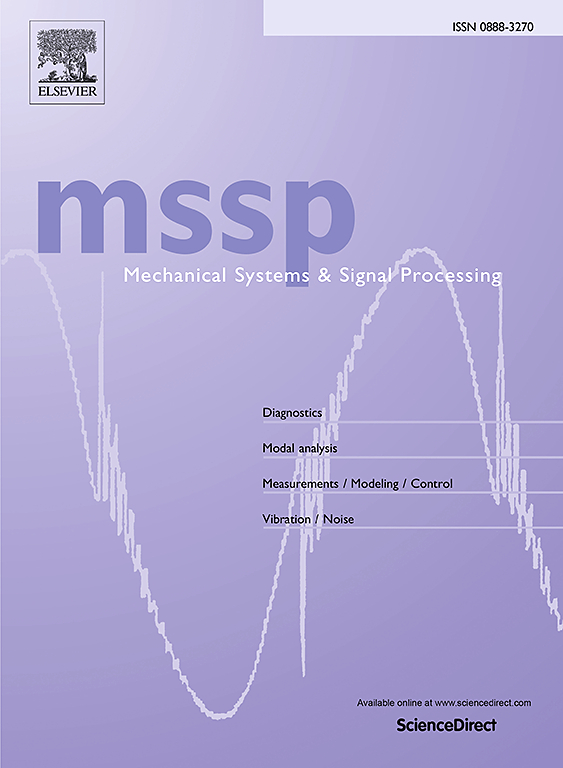实验驱动电机各向异性阻尼特性识别方法及理论模态动力学建模
IF 7.9
1区 工程技术
Q1 ENGINEERING, MECHANICAL
引用次数: 0
摘要
电机的模态动力学特性是准确预测电机振动和噪声的关键因素。固有频率决定了结构共振噪声的频率,使其成为一个广泛研究的课题。尽管阻尼比对噪声幅值的贡献很大,但这一因素在研究领域仍未得到充分的探讨。从本质上讲,定子铁心和绕组的各向异性材料阻尼仍未得到研究。针对现有研究的不足,提出了一种实验驱动的阻尼比计算方法。首先,建立了由定子铁心、绕组和机匣组成的耦合结构的理论模态动力学模型。特别地,采用了迟滞阻尼理论来考虑材料的阻尼行为。在此基础上,深入研究了定子铁心和绕组各向异性材料阻尼对结构阻尼比的影响。随后,基于所提出的理论模型和模态实验,确定了定子铁芯和绕组的各向异性材料参数和各向异性阻尼参数。最后,利用确定的amp和adp计算固有频率和阻尼比。定子铁心和定子总成阻尼比的绝对误差在0.14%以内,定子系统的绝对误差在0.25%以内。该方法对分析和控制电磁脉冲的结构共振噪声具有重要意义。本文章由计算机程序翻译,如有差异,请以英文原文为准。
Experiment-driven identification approach of anisotropic damping behaviors and theoretical modal dynamic modelling of electric motors
The modal dynamic behavior of the electrical motors (EMs) is a key determinant in accurately predicting vibration and noise. The natural frequency determines the frequency of structural resonance noise, making it a subject of extensive research. Notwithstanding the significant contributions of the damping ratios to the noise amplitude, this factor remains underexplored in the research field. Essentially, the anisotropic material damping of stator cores and windings remains unstudied. To address the existing research deficiency, an experiment-driven approach for calculating the damping ratios is put forward. Firstly, a theoretical modal dynamic model of the coupled structure consisting of the stator core, winding, and casing is developed. In particular, the hysteresis damping theory is employed to take the material damping behavior into account. Accordingly, the effect of anisotropic material damping of the stator core and windings on the structural damping ratios is thoroughly investigated. Subsequently, the anisotropic material parameters (AMPs) and anisotropic damping parameters (ADPs) of stator cores and windings are identified based on the proposed theoretical models and modal experiments. Finally, Natural frequencies and damping ratios are calculated utilizing the identified AMPs and ADPs. The absolute errors of the damping ratios of the stator core and stator assembly are within 0.14%, and the absolute errors of the stator system are within 0.25%. The proposed approach is of great significance for analyzing and controlling structural resonance noise of the EMs.
求助全文
通过发布文献求助,成功后即可免费获取论文全文。
去求助
来源期刊

Mechanical Systems and Signal Processing
工程技术-工程:机械
CiteScore
14.80
自引率
13.10%
发文量
1183
审稿时长
5.4 months
期刊介绍:
Journal Name: Mechanical Systems and Signal Processing (MSSP)
Interdisciplinary Focus:
Mechanical, Aerospace, and Civil Engineering
Purpose:Reporting scientific advancements of the highest quality
Arising from new techniques in sensing, instrumentation, signal processing, modelling, and control of dynamic systems
 求助内容:
求助内容: 应助结果提醒方式:
应助结果提醒方式:


